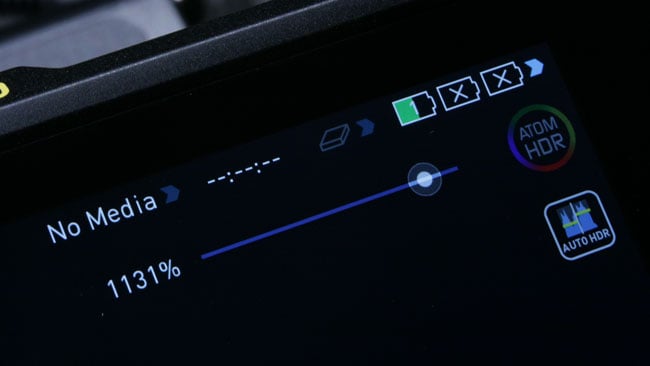
Replay: The Great Battery Mystery: Have you ever wondered why many devices from many manufacturers give inconsistent battery readings? We have the answer.
A comment in response to our coverage of the Blackmagic Video Assist complained that the battery level meter could be inaccurate. And yes, the poster has a point, but the reason this problem wasn't mentioned in the review is that it is such a common problem across a range of devices and so tricky to solve that we're becoming almost immune to it.
The reality is that it's very difficult to provide a worthwhile battery level meter on a device where we don't have any access to information about the battery beyond how many volts are coming out of it – and that's not nearly enough.
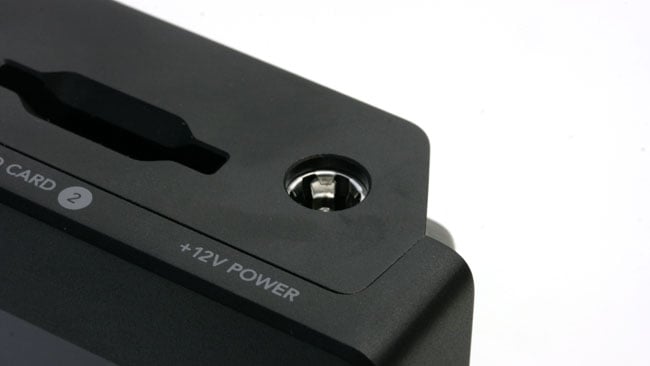 When a device such as Blackmagic's Video Assist, pictured, is on external power,
When a device such as Blackmagic's Video Assist, pictured, is on external power,
there's no real way for it to determine the state of charge - unless the user can set some options.
To be fair, measuring the voltage of a battery is sometimes a reasonable way to tell one that's full from one that's empty, but we have to know what type it is; trying to accurately determine the state of a partially-discharged one can be even more difficult. The reason for this is that there are at least three or four types of rechargeable chemistry in common use for film and television work and they all behave very differently. Most batteries for professional gear are specified atsomething like twelve volts, which will vary slightly as it charges and discharges. They're made of several cells in series – hence the word battery – and the voltage of each cell is determined by the chemistry used to create it.
What's your voltage?
Lithium ion types develop a 3.6V per cell on average, hence the common 7.2V rating of small camcorder power packs which are built with two cells in series (and up to several in parallel, for more capacity). They vary, however, between about 4.2V per cell when fully charged and perhaps 3V per cell when fully discharged. Lithium ion batteries designed to drive loads intended for 12 volt operation could use three cells in series for 12.6V when charged, but when fully discharged the battery would develop only 9V, which is not enough to satisfy many devices. It's more common for large lithium-ion camera batteries to use four series cells, so that the fully discharged voltage is 12V, but this means that fresh off the charger, they'll develop 16.8V.
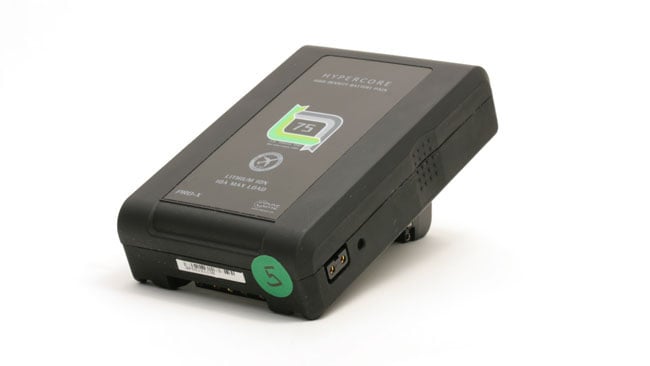 Most broadcast camera batteries, such as CoreSWX's Hypercore range, include charge metering, but it can be hard (or impossible) for the powered device to read this information.
Most broadcast camera batteries, such as CoreSWX's Hypercore range, include charge metering, but it can be hard (or impossible) for the powered device to read this information.
Compare a nickel metal hydride (NiMH) battery. At 1.2V per cell, ten cells would be the obvious choice for a 12V battery. However, many NiMH cells are only really fully discharged at perhaps 0.9V, leading, again, to an inadequate nine volts when discharged. Some NiMH batteries are built like this, but others use eleven cells for a nominal 13.2V, or even twelve, for the common 14.4V rating and about 11V when fully discharged. Compare again to a lead-acid battery, as sometimes built into a carry case for high capacity applications. They vary in voltage very little, ranging between about 2.1 and 1.95 volts per cell and invariably used to form 12V batteries with six cells each.
Battery electronics
So, we have batteries which might reasonably range anywhere between nine and nearly seventeen volts. Full discharge of some types (four-cell lithium-ion) represents full charge for others (ten-cell NiMH). It is obvious that no device can show any sort of accurate battery capacity indication based on voltage alone. It's for this reason that many batteries have a lot of electronics on board. Part of the purpose of this is to protect the battery from both overcharge and overdischarge, both of which are unhealthy for the battery, limiting its future performance and can cause safety problems. A big part of the job done by battery electronics, however, is to monitor power as it flows into and out of the battery and to keep a moment-by-moment check on the state of charge.
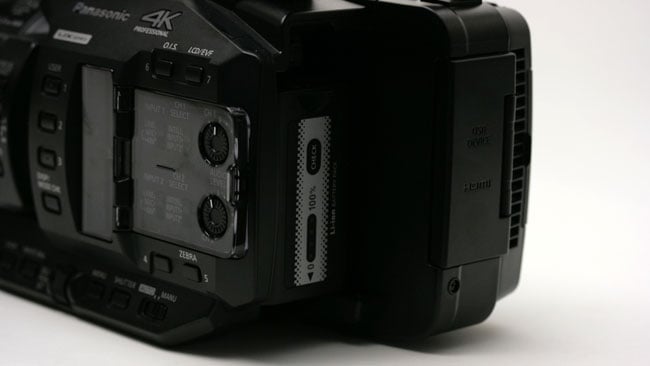 Batteries for small camcorders, such as this Panasonic AG-UX90, often measure the ebb and flow of power and communicate their state of charge to the camera for display to the user.
Batteries for small camcorders, such as this Panasonic AG-UX90, often measure the ebb and flow of power and communicate their state of charge to the camera for display to the user.
It's sometimes possible to interface with these electronics and read the information, but that's a very big field to cover for a device that must tolerate being powered by a wide variety of batteries. Additionally, the information may not always be completely accurate in any case. Variations in temperature, the age of the battery, how it's been treated in the past and normal tolerances in the capacity calculations mean that the average laptop can only give a notoriously rough idea of how long it will run for before the power is all gone.
Because of all this, for a device such as a camera accessory, no reasonable metering can be done without the opportunity to tell the device, via a menu option, what sort of battery is in use. This can and should be done, as it has been done widely on broadcast cameras in the past. Simply being able to set a threshold voltage at which a capacity warning is displayed would help; to avoid over-discharging and damaging batteries, it's also useful to be able to set an absolute cut-off at which point the device will shut down. This would require the user to know how the batteries in question behave, but it's the only way the system can ever really work properly. And yes, manufacturers: this needs to work on both battery power and when we apply power to the DC input connector. When external power is in use, many devices simply show 'AC' on the display, as if nobody has ever connected a battery to a DC input jack.
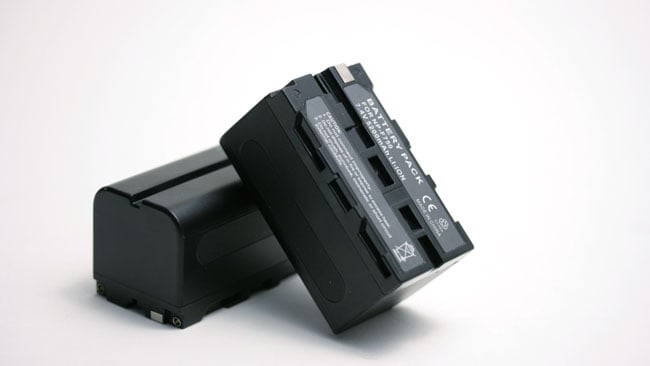 Sony's NP-F range has become ubiquitous as power for small devices.
Sony's NP-F range has become ubiquitous as power for small devices.
They typically include charge metering electronics.
In the meantime, while we hope these will be taken as useful suggestions by all manufacturers, if you happen to throw a freshly-charged battery onto a device which then proudly displays a bar graph indicating 25% capacity, don't panic. Do test, of course, but be assured - it's completely reasonable that the device may not have the faintest idea what it's talking about.
Tags: Technology Power



Comments